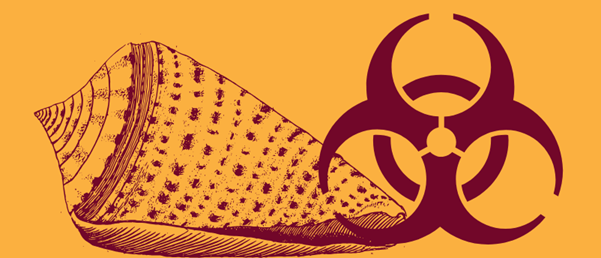New method for studying the cone snail’s toxic trait

An investigation of the cone snail toxin has led to the development of a new method for studying molecular interactions.
Researchers led by Izhar Karbat and Eitan Reuvenyat from the Weizmann Institute (Rehovot, Israel) have developed a new method for investigating the molecular targets of the cone snail toxin, Conkunitzin-S1 (Cs1). They combined AI with traditional research methods to create a prediction pipeline to determine which proteins will be affected by natural toxins. This work was presented at the 69th Biophysical Society Annual Meeting (15–19 February 2025; Los Angeles, CA, USA) and contributes to both ecological research of the cone snail and its prey as well as drug discovery and development studies.
The cone snail is a venomous invertebrate that can paralyze its prey – fish – instantly via a harpoon-like tooth. Its venom is composed of many toxins that have previously been found to block calcium, nicotinic acetylcholine, sodium and potassium channels. When isolated, some of the proteins from cone snail venom have also been found to have therapeutic properties, aiding drug development pipelines.
Molecular interactions are at the core of this research. Understanding how a molecule, whether it be existing or novel, interacts with its target and surrounding molecules is essential to many different fields, including drug discovery, agriculture or species control. However, the tools available to investigate and predict these interactions weren’t yet advanced enough to do so when the current team was researching the cone snail toxin . This changed with the advent of AI and further strides in structural biology, leading to new methods for investigating these interactions.

How does the body respond to parasitic infections?
Researchers have found an unknown and unexpected mechanism that regulates the immune response against helminth infections.
Although previous research has identified that the Cs1 toxin blocks potassium channels in fish and insects – but not mammals – the exact targets of Cs1 and the potassium channels most vulnerable to the toxin have remained elusive. Now, researchers have developed a two-pronged computational approach to explore this.
They first used AlphaFold, an AI platform for the prediction of protein structures, to predict how Cs1 would bind to different fish potassium channels. Then, they developed a new AI model – called ET3 – that analyzes how water molecules circulate these potassium channels, identifying irregularities in water movement around the part of the channels that control which ions can pass through. This part of the channel is called the selectivity filter, and when blocked, the channel shuts down. “Using molecular dynamics and the new AI-driven structural tools we were able to find the small subset of channels in fish which bind our toxins with high affinity and are probably the real target of the cone snail,” commented Karbat.
Not only does this work illuminate more about the cone snail Cs1 toxin and its targets in fish, but it also offers a new pipeline for studying molecular interactions, which could be applied to drug development studies to identify specific drug targets and off-target interactions. Looking ahead, the team plans to use their new method to further study molecular interactions.